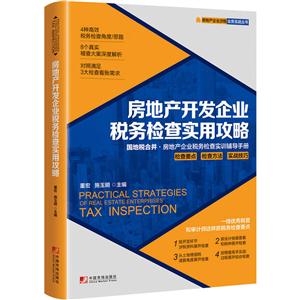国际会计学(第6版)

|
国际会计学(第6版)作者:弗雷德里克·D·S·乔伊 (Frederick D.S.Choi) 开 本:03 书号ISBN:9787300094854 定价:45.0 出版时间:2008-09-01 出版社:中国人民大学出版社 |
国际会计学(第6版) 本书特色
与第5版相比,《国际会计学》(第6版)*突出的修订表现在:对公司治理内容和相关立法的拓展.对比较国际会计内容的充实(更加强调对欧、亚、拉美地区有代表性的国家的会计实务体系的评述).对国际会计趋同和主要国际组织的重大努力的讨论,以及对评述发达国家和新兴市场经济国家的报告和披露实务的同等重视。配套教辅与网上资源
国际会计学(第6版) 内容简介
简介 与第5版相比,《国际会计学》(第6版)*突出的修订表现在:对公司治理内容和相关立法的拓展.对比较国际会计内容的充实(更加强调对欧、亚、拉美地区有代表性的国家的会计实务体系的评述).对国际会计趋同和主要国际组织的重大努力的讨论,以及对评述发达国家和新兴市场经济国家的报告和披露实务的同等重视。配套教辅与网上资源
国际会计学(第6版) 目录
CHAPTER 1Introduction 1Historical Perspective 1Contemporary Perspective 2Growth and Spread of Multinational Operations 4Financial Innovation 9Global Competition 10Cross-Border Mergers and Acquisitions 11Internationalization of Capital Markets 12Americas 13Western Europe 14Asia 15Cross-Border Equity Listing and Issuance 15Where Are We? 16Learning Objectives 17Appendix 1-1 Changes in Financial Sector Policy in 34 Nations, 1973-1996 21Appendix 1-2 Stock Exchange Web Sites 24Appendix 1-3 Financial Statements and Selected Notes from the AnnualReport of INFOSYS26CHAPTER 2Development and Classification27Development 27Classification 33Four Approaches to Accounting Development 33Legal Systems: Common Law vs. Code Law Accounting 34Practice Systems: Fair Presentation vs. Legal Compliance Accounting 35CHAPTER 3Comparative Accounting: Europe37Some Observations about Accounting Standards and Practice 38IFRS in the European Union 39Five National Financial Accounting Systems 41France 4IGermany 46Czech Republic 51The Netherlands 54United Kingdom 58CHAPTER 4Comparative Accounting:The Americas and Asia64Five National Financial Accounting Systems 65United States 65Mexico 70Japan 74China 78India 83CHAPTER 5Reporting and Disclosure88Development of Disclosure 88Voluntary Disclosure 89Regulatory Disclosure Requirements 90The US. SEC Financial Reporting Debate 91Reporting and Disclosure Practices 92Disclosures of Forward-Looking Information 93Segment Disclosures 94Social Responsibility Reporting 96Special Disclosures" for Nondomestic Financial Statement Users and AccountingPrinciples Used 111Corporate Governance Disclosures 111Internet Business Reporting and Disclosure 120Annual Report Disclosures in Emerging-Market Countries 121Implications for Financial Statement Users and Managers 122CHAPTER 6Foreign Currency Translation124Results of Operations 124Reasons for Translation 127Background and Terminology 127The Problem 130Financial Statement Effects of Alternative Translation Rates 130Foreign Currency Transactions 132Single- Transaction Perspective 134Two- Transaction Perspective 134Foreign Currency Translation 135Multiple-Rate Methods 136Financial Statement Effects 138Which Is Best? 140Appropriate Current Rate 142Translation Gains and Losses 142Where Are We? 144Translation Accounting Development 144Pre-1965 1441965-1975 1441975-1981 1451981-Present 145Features of Standard No. 52/International Accounting Standard 21 145Translation When Local Currency Is the Functional Currency 146Translation When the Parent Currency Is the Functional Currency 146Translation When Foreign Currency Is the Functional Currency 146Measurement Issues 148Reporting Perspective 148What Happened to Historical Cost? 149Concept of lncome 149Managed Earnings 149Foreign Currency Translation and Inflation 150Foreign Currency Translation Elsewhere 151Appendix 6-1 Translation and Remeasurement Under FAS No. 52 151CHAPTER 7Financial Reporting and Changing Prices157Changing Prices Defined 159Why Are Financial Statements Potentially Misleading During Periods ofChanging Prices? 162Types of Inflation Adjustments 163General Price-Level Adjustments 163Price Indexes 163Current-Cost Adjustments 167General Price-Level Adjusted Current Costs 168National Perspectives On Inflation Accounting 170United States 170United Kingdom 171Brazil 173International Accounting Standards Board 176Inflation Issues 177Inflation Gains and Losses 177Holding Gains and Losses 178Foreign Inflation 178Avoiding the Double-Dip 179Appendix 7-1 Accounting for Foreign Inflation: A Case Analysis 181CHAPTER 8Global Accounting and Auditing Standards184A Survey of International Convergence 184Advantages of International Convergence 184Criticisms of lnternational Standards 186Reconciliation and Mutual Recognition 187Evaluation 187Some Significant Events in the History of International Accounting StandardSetting188Overview of Major International Organizations Promoting AccountingConvergence 189International Accounting Standards Board 192IASC's Core Standards and the IOSCO Agreement 193The New IASB Structure 194Recognition and Support for the IASB 196U.S. Securities and Exchange Commission Response to IFRS 196European Union (EU) 197Fourth, Seventh, and Eighth Directives 197Have EU Harmonization Efforts Been Successful? 198The EU's New Approach and the Integration of European Financial Markets 199International Organization of Securities Commissions (IOSCO) 200International Federation of Accountants (IFAC) 203United Nations Intergovernmental Working Group of Experts on InternationalStandards of Accounting and Reporting (ISAR) 205Organization For Economic Cooperation and Development (OECD) 206Conclusion 206CHAPTER 9International Financial Statement Analysis207Introduction207Challenges And Opportunities In Cross-Border Analysis 207Business Analysis Framework 208International Business Strategy Analysis 209Information Availability 209Recommendations for Analysis 210Accounting Analysis211Suggestions for the Analyst 213International Financial Analysis 213Ratio Analysis 213Cash Flow Analysis 216Coping Mechanisms 216International Prospective Analysis 217Further Issues 219Information A ccess 219Timeliness of Information 222Foreign Currency Considerations 223Differences in Statement Format 226Language and Terminology Barriers 226Financial Statement Analysis and Auditing227The Attest Function 227The Audit Report228Auditing and Credibility230Coping Mechanisms 232Internal Auditing233
管理 会计 国际会计
在线阅读
- 最新内容
- 相关内容
- 网友推荐
- 图文推荐
上一篇:国际金融-(精编版)(第三版)
下一篇:电子商务应用综合实训指导
零零教育社区:论坛热帖子
| [高考] 2022 西安电子科技大学《软件工程》大作业答案 (2022-04-25) |
| [家长教育] 孩子为什么会和父母感情疏离? (2019-07-14) |
| [教师分享] 给远方姐姐的一封信 (2018-11-07) |
| [教师分享] 伸缩门 (2018-11-07) |
| [教师分享] 回家乡 (2018-11-07) |
| [教师分享] 是风味也是人间 (2018-11-07) |
| [教师分享] 一句格言的启示 (2018-11-07) |
| [教师分享] 无规矩不成方圆 (2018-11-07) |
| [教师分享] 第十届全国教育名家论坛有感(二) (2018-11-07) |
| [教师分享] 贪玩的小狗 (2018-11-07) |






